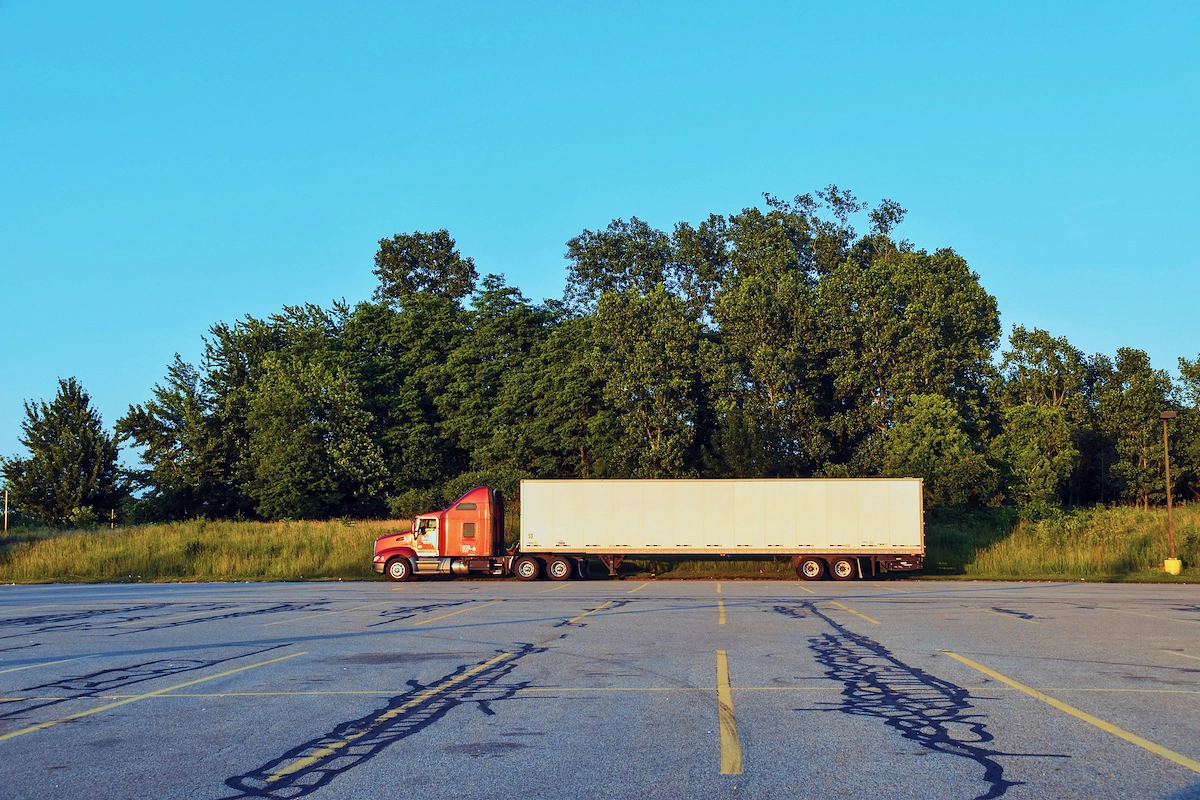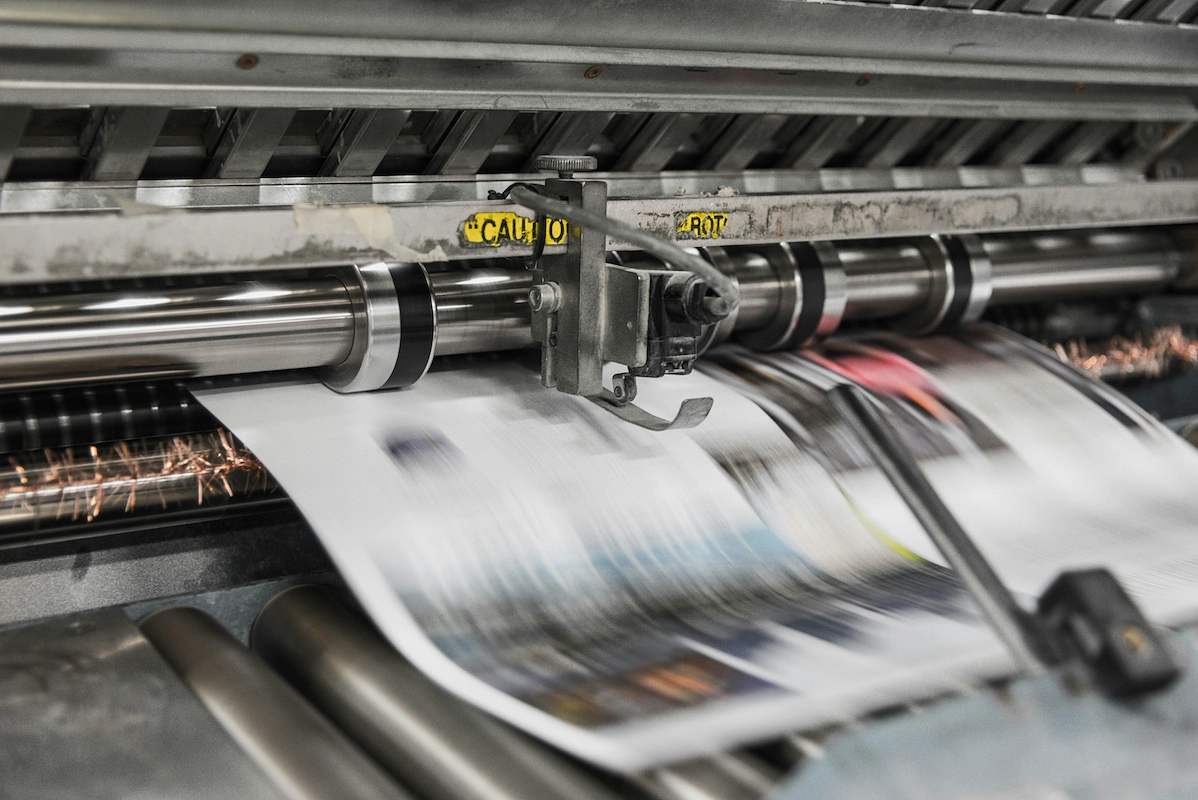Starting a truck parking lot business is a rewarding venture that combines real estate management and logistical planning with sharp business savvy. The trucking industry moves the vast majority of freight, creating a constant demand for secure parking from long-haul drivers, local fleets, and logistics companies.
This guide will take you through the practical steps of selecting the right location, securing funding, obtaining necessary permits, and validating your business concept to help you launch a successful truck parking lot business in the U.S.
Step 1: Plan your business and validate your concept
Conduct market and competitor research
Start by visiting local truck stops and industrial parks to talk directly with drivers. Ask about their preferred locations, safety concerns, and what they would pay for a guaranteed spot. This firsthand information is invaluable for your plan.
A common oversight is to ignore local zoning laws. Before you get too far, check with your city or county planning department to confirm that commercial truck parking is permitted in your target areas. This simple check can save you from a major headache.
Once you have a few potential areas, use Google Maps to spot existing lots and study their customer reviews. You can also browse commercial real estate sites like LoopNet or CREXi to analyze available properties and their proximity to major highways.
Budget your startup costs
Your initial investment will vary, but it's wise to have a clear financial picture from day one. Many new owners misjudge site development costs, so get quotes for paving, fencing, and lighting early. These expenses can quickly add up.
Here’s a typical breakdown of startup expenses:
- Land Acquisition or Lease Deposit: $100,000 - $1,000,000+
- Site Development (paving, fencing, lighting): $75,000 - $300,000
- Permits, Zoning, and Legal Fees: $5,000 - $25,000
- Security Systems (cameras, gates): $10,000 - $40,000
Your total initial outlay could range from around $190,000 to well over $1.3 million. This depends heavily on your location and the scale of your operation.
Here are 4 immediate steps to take:
- Interview at least 10 truck drivers about their parking needs and price points.
- Contact your local planning department to verify zoning for two potential locations.
- Identify 3-5 competitors with Google Maps and analyze their reviews.
- Create a preliminary budget with estimated costs for land, site development, and permits.
Step 2: Set up your legal structure and get licensed
Choose your business structure
Most truck parking businesses operate as a Limited Liability Company (LLC). This structure protects your personal assets from business debts and allows profits to pass through to your personal taxes, avoiding double taxation. A C Corporation is another option, but it is more complex.
Secure permits and licenses
You will primarily deal with your local government. Contact your city or county planning department for a Conditional Use Permit (CUP) or a specific Zoning Permit. This is often the longest part of the process, taking 3 to 9 months and costing $500 to $5,000.
A frequent misstep is assuming you need federal trucking licenses. If you only provide parking, you typically do not need a USDOT or MC number from the Federal Motor Carrier Safety Administration (FMCSA). This can save you significant paperwork and compliance headaches.
You will also need a standard local Business License, which is usually an annual requirement. At the state level, you must register your LLC or corporation with the Secretary of State to operate legally. This makes your business an official entity.
Here are 4 immediate steps to take:
- Consult a lawyer to finalize your choice between an LLC and a corporation.
- File your business formation documents with your state's Secretary of State.
- Schedule a pre-application meeting with your local planning and zoning department.
- Request a complete list of required permits and their associated fee schedules.
Step 3: Secure insurance and manage risk
Get the right insurance coverage
To protect your investment, you need the right insurance. A frequent mistake is to buy a generic policy. You need coverage designed for specific risks like cargo theft or environmental liability from fuel spills, which standard policies often exclude.
You will need General Liability insurance with at least $1 million to $2 million in coverage. You also need Property Insurance for your land and any structures. If you hire employees, Workers' Compensation is a legal requirement in most states.
Annual premiums can range from $5,000 to $20,000, based on your lot size and services. You might want to get quotes from providers who understand trucking, such as Progressive Commercial, Great West Casualty, or Sentry Insurance. They can build a suitable policy.
Address unique business risks
Beyond insurance, you must actively manage on-site risks. Cargo theft is a major concern, so high-quality lighting and surveillance cameras are non-negotiable. Also, establish clear rules for drivers about repairs to prevent environmental contamination on your property.
Here are 3 immediate steps to take:
- Contact three insurance providers specializing in commercial trucking for quotes.
- Ask each provider to detail how their policy covers cargo theft and environmental spills.
- Draft a basic risk management plan that includes security protocols and rules for drivers.
Step 4: Select your location and buy equipment
Aim for at least two acres for a 50-space lot. This provides room for 12x80 foot stalls and wide turn radiuses. You should look for properties zoned as 'Industrial' or 'Heavy Commercial' since they are more likely to permit truck parking without extensive hearings.
When you negotiate a lease, try to secure a long-term agreement of 5 to 10 years for stability. It is a good idea to clarify who pays for property taxes and major maintenance. Many commercial leases are 'Triple Net' (NNN), which puts these costs on you.
Purchase your equipment
Once you have a location, you can budget for site improvements. A mistake some owners make is underestimating security costs. A robust camera and gate system is a major selling point for drivers and can justify higher parking fees.
Here are some typical costs for outfitting your lot:
- Automated Gate System: $10,000 - $30,000
- Security Cameras (8-16 camera system): $5,000 - $20,000
- High-Mast LED Lighting: $15,000 - $50,000+
- Lot Surfacing (crushed asphalt or gravel): $2 - $4 per square foot
Here are 4 immediate steps to take:
- Identify two properties zoned for industrial or heavy commercial use.
- Request lease proposals for these properties with 5- and 10-year term options.
- Get quotes from two commercial security providers for a gate and camera system.
- Obtain estimates for both gravel and asphalt surfacing for a 2-acre lot.
Step 5: Set up your payment system
Choose your payment methods
Your revenue will likely come from monthly contracts with fleets and daily or weekly rates for independent drivers. Offering flexible terms is a good way to attract a wider range of customers. This approach ensures steady income while capturing transient business.
Many new owners make the mistake of only accepting cash. To secure fleet contracts, you need to accept credit cards and ACH bank transfers. These clients require digital payment options and clear invoicing for their records, so a cash-only model will limit your growth.
When you look at payment solutions, find one that can automate recurring billing for your monthly clients. Be aware that many providers charge average commission rates between 2.5% and 3.5% and may require you to buy or rent hardware.
For payments you collect on-site, JIM offers a streamlined solution. With JIM, you can accept debit, credit, and digital wallets directly through your smartphone. Just tap and the payment is done. At just 1.99% per transaction with no hidden costs, it is useful for collecting daily fees from drivers.
- Get Started: Download the JIM app for iOS.
- Make a Sale: Type the sales amount, hit sell, and ask your customer to tap their card or device on your phone.
- Access Funds: Your money is available right on your JIM card as soon as the sale is done, with no waiting for bank transfers.
Here are 3 immediate steps to take:
- Outline your pricing for daily, weekly, and monthly parking.
- Research two payment systems that support recurring billing for fleet contracts.
- Download the JIM app to explore its features for on-site payments.
Step 6: Secure funding and manage finances
Find the right funding source
The SBA 504 loan program is a great fit for this business. It is designed for buying land and funding site development. You typically only need a 10% down payment, as a bank and a Certified Development Company (CDC) finance the rest.
You might also consider a conventional commercial real estate loan from a local bank. Be prepared for a higher down payment, usually 20-30%. Lenders will want to see a detailed business plan with solid financial projections before they approve your application.
If your chosen location is in a rural area, look into the USDA Business & Industry loan program. A mistake some owners make is approaching lenders without a three-year financial forecast. This document is critical for showing them you have a viable plan.
Plan your working capital
Once you secure your main loan, you need cash for day-to-day operations. This is your working capital. It covers costs like insurance, utilities, and marketing before your lot fills up and generates consistent revenue. Plan for at least six months of expenses.
For a small to medium-sized lot, you should budget between $30,000 and $75,000 for your first six months. This buffer ensures you can pay your bills and manage unexpected costs while you build your customer base.
Here are 4 immediate steps to take:
- Draft a three-year financial projection for your business plan.
- Contact your local bank to discuss commercial real estate loan options.
- Find your local SBA-certified development company (CDC) to inquire about the 504 loan program.
- Calculate your operating expenses for the first six months to determine your working capital needs.
Step 7: Hire your team and set up operations
Define your key roles
For a typical 50-space lot, you can often start with one key employee: a Lot Manager. This person handles customer service, invoicing, and daily site inspections. Expect a salary between $40,000 and $60,000, based on your market.
If you offer 24/7 access, you will also need Security Guards. Many owners make the mistake of understaffing at night, which compromises safety. A security guard can cost $18 to $25 per hour, and most states require them to have a license or "guard card."
Streamline your daily workflow
Create a simple operations manual that outlines daily tasks. This should cover the check-in process, how to handle payment disputes, and emergency contacts. A clear plan prevents confusion and ensures consistent service for drivers.
To support your staff, look into parking management software. These systems can automate reservations, recurring billing for fleet accounts, and even integrate with your automated gate. This reduces manual work and lets a small team manage a large lot efficiently.
Here are 4 immediate steps to take:
- Draft job descriptions for a Lot Manager and a Security Guard.
- Check your state's licensing requirements for security personnel.
- Research two parking management software systems for reservations and billing.
- Outline a one-page daily operations checklist for your staff.
Step 8: Market your lot and acquire customers
Build an online presence
Start with a Google Business Profile so your lot appears on Google Maps. Many drivers search for "truck parking near me" on the go. Also, create a simple website with your address, rates, amenities, and contact information. This gives you a professional digital footprint.
A mistake some new owners make is to stop there. You should also list your facility on truck parking apps like Trucker Path and DAT One. These platforms are a primary resource for drivers to find and reserve secure spots, putting you directly in their path.
Reach out directly to fleets
Direct outreach is effective for securing monthly contracts. Identify local trucking companies by searching online directories or just by observing company names on trucks in your area. Contact their fleet or dispatch manager with a brief email that outlines your services and rates.
To close the deal, you might offer an introductory discount. For example, a 10% discount for a fleet that reserves five or more spots can be a strong incentive. This helps you build a base of recurring revenue quickly and fills your lot faster.
Here are 4 immediate steps to take:
- Create and verify your Google Business Profile.
- List your parking lot on Trucker Path and at least one other industry app.
- Compile a list of 10 local trucking companies to contact.
- Draft an email template with an introductory discount for new fleet contracts.
Step 9: Set your pricing strategy
Establish your rate structure
Your pricing should be tiered. Offer daily rates from $15 to $35 for transient drivers. Provide weekly options around $75 to $150. Monthly contracts, your most stable income, can range from $250 to $500 per spot, depending on your location and security.
You might also offer a premium for reserved spots. Charging an extra 10-15% for a guaranteed space is a common practice that appeals to drivers and fleets who need certainty. Unreserved spots can then fill the remaining capacity at your standard rate.
Analyze competitors and set margins
To find the right price, call competing lots and ask for their daily and monthly rates. Also, check truck parking apps like Trucker Path to see what others charge nearby. Some owners make the mistake of only competing on price, which can signal poor security.
Instead, justify your rates with superior security or amenities. After you cover all expenses, a well-managed lot can achieve a net profit margin of 20% to 40%. This should be your target once you are fully operational and have a steady customer base.
Here are 4 immediate steps to take:
- Call three local competitors to get their current daily and monthly rates.
- Decide on a premium price for reserved spots versus unreserved spots.
- Calculate your break-even point based on your estimated monthly expenses.
- Create a simple rate sheet with daily, weekly, and monthly pricing tiers.
Step 10: Maintain quality and scale your operations
Measure performance and maintain quality
To keep your service strong, track your occupancy rate monthly. A consistent rate of 85-90% signals high demand. Also, monitor customer churn. If you lose more than 5% of your monthly contract clients in a year, it is time to investigate why.
Many owners get complacent once the lot is full. They stop asking for feedback. You should survey your fleet clients quarterly. Ask about gate access, lighting, and staff responsiveness. This shows you value their business and helps you fix small problems before they become big ones.
Know when to grow
When your lot stays over 90% full for six consecutive months, it is a clear sign to expand. You can either add more spaces to your current property or start scouting for a second location. This is also the time to hire another lot manager, especially if you expand beyond 75 spaces.
As you grow, managing multiple locations or a very large lot requires better systems. You might want to look at parking management software like ParkZebra. It can help you manage reservations and billing across different sites from a single dashboard.
Here are 4 immediate steps to take:
- Set up a spreadsheet to track your monthly occupancy rate and client churn.
- Create a short, five-question survey to send to your fleet clients.
- Research the Transported Asset Protection Association (TAPA) security standards for ideas.
- Review your finances to see if you can support an expansion if you hit 90% occupancy.
You now have a clear path to open your truck parking business. Remember, your reputation for safety and reliability is your greatest asset. Drivers talk, and a secure lot will always be in demand. With careful planning, you are well-equipped to start this journey.
And when you collect daily fees, keep it simple. A solution like JIM turns your phone into a card reader for a flat 1.99% fee, with no extra hardware. It makes payments easy for you and the drivers. Download JIM to get started.















